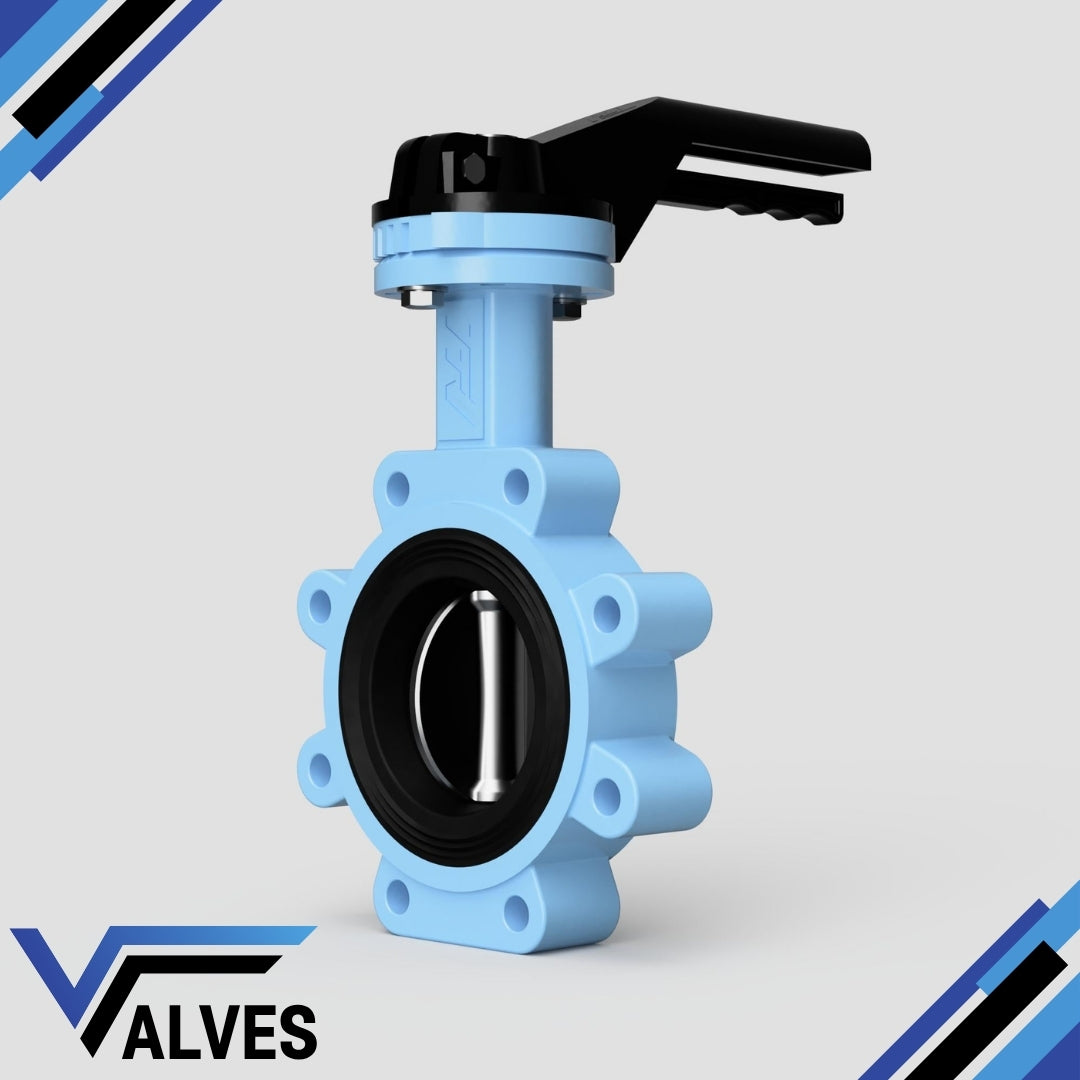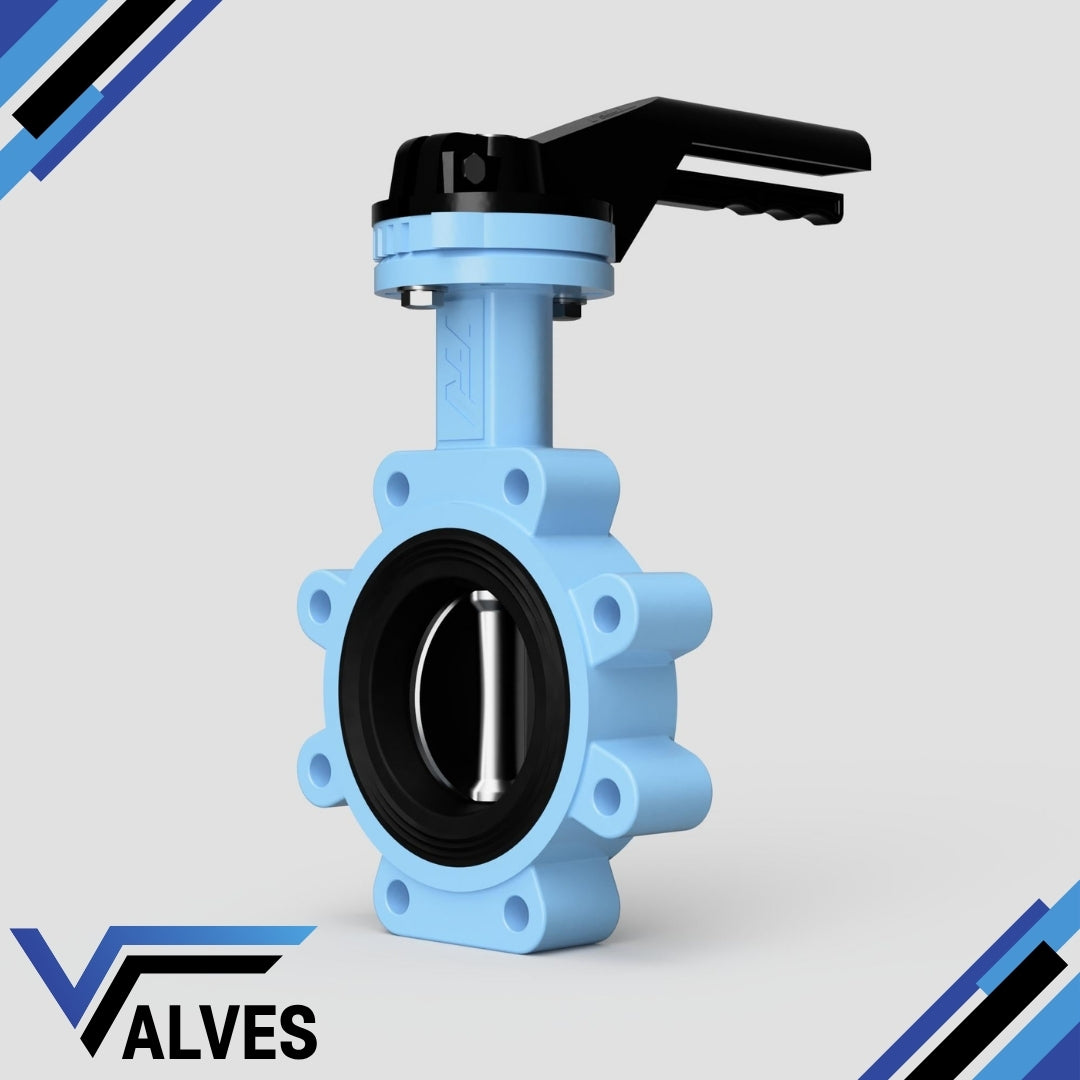Valves UK
TTV Lugged Butterfly Valve - High Temperature EPDM Seat
TTV Lugged Butterfly Valve - High Temperature EPDM Seat
Couldn't load pickup availability
Upgrade your fluid control systems with our high-performance PN16 Lugged Pattern Butterfly Valve, designed for durability and reliability in demanding applications. Crafted from premium-grade Ductile Iron GJS500-7, this valve offers superior strength and resilience, making it ideal for use in various industrial environments.
Key Features:
Material: The valve body is constructed from Ductile Iron GJS500-7, known for its excellent toughness and ductility, ensuring long-lasting performance even under high pressure and temperature conditions.
Pressure Rating: PN16, making it suitable for a wide range of applications, including water, HVAC, and general industrial services.
Seat Material: Equipped with a High-Temperature EPDM seat, this valve provides excellent resistance to heat, chemicals, and aging, ensuring a tight seal and reduced maintenance.
Lugged Design: The lugged pattern allows for easy installation and removal from the pipeline, enabling maintenance without disturbing the system.
Operation: Featuring a lockable lever-operated mechanism, this valve offers precise control over fluid flow, with the added security of locking to prevent unauthorised adjustments.
Versatility: This butterfly valve is designed for use in a variety of systems, including water treatment, chemical processing, and other industrial applications where reliable shutoff and flow regulation are essential.
Applications:
Ideal for HVAC systems, water distribution networks, chemical processing plants, and other industrial processes that demand high performance and reliability.
Choose our PN16 Lugged Pattern TTV Butterfly Valve for a durable, efficient, and secure solution to your fluid control needs.
Share

FAQ's
What is the difference between a valve and an actuator?
What types of actuators are available?
The main types of actuators are:
Pneumatic actuators – use compressed air for fast, reliable operation.
Electric actuators – use electrical power for precise control.
Hydraulic actuators – use fluid pressure for high-torque applications.
Each type offers unique advantages depending on the environment, media, and system control needs.
How do I choose the right actuator for my valve?
To select the correct actuator, consider:
Valve type and torque requirement
Power source available (air, electric, or hydraulic)
Operating environment (temperature, humidity, hazardous area)
Control signal type (on/off or modulating)
Matching actuator torque and compatibility with the valve’s ISO mounting ensures reliable performance.
What are the main types of valves used in automation?
The most common valves in automated systems include:
Ball valves – for tight shutoff and quick operation.
Butterfly valves – for larger flow control with compact design.
Globe valves – for precise throttling and flow regulation.
Check valves – to prevent backflow.
Gate valves – for full bore flow isolation.
What’s the difference between a double-acting and spring-return actuator?
Double-acting actuators use air (or power) to both open and close the valve.
Spring-return actuators use air to open (or close) the valve, and a built-in spring to automatically return it to a safe position when power or air is lost — ideal for fail-safe operation.
How often should valves and actuators be serviced?
Regular maintenance intervals depend on operating conditions, but a good rule of thumb is to inspect every 6–12 months.
This includes checking for leaks, lubrication, seal wear, and actuator responsiveness to prevent unexpected downtime.

